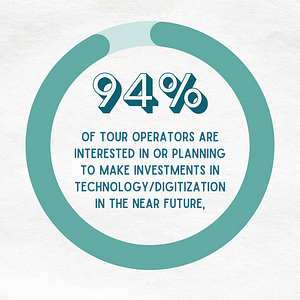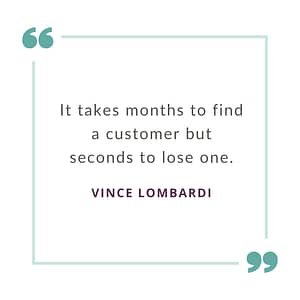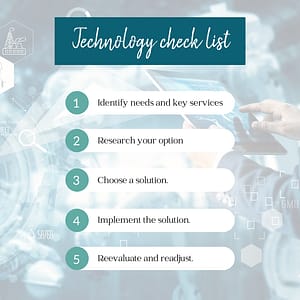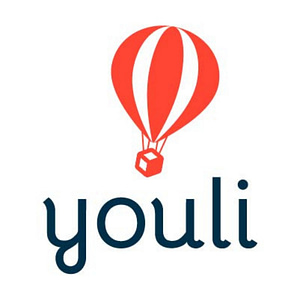The Future of Travel Technology
Recently Flywire released this ‘Technology in Adventure Travel’ report which we found interesting and helpful for the most part but it was also missing some upcoming, revolutionary payment channels. In summary, we felt it was quite biased in favour of their own software’s prowess.
The report discusses how technology heavily impacts the adventure industry and provides a broad set of insights that can help provide the basis for enhancing your travel company’s tech stack.
In this post, we highlight our biggest takeaways from the report, share some of our opinions and our software recommendations.
The ‘Perfect’ Travel Software Does NOT Exist
This report emphasizes what we have been saying for a while. No software can do it all. In their own way, each software falls short somehow.
This has resulted in the need for a collection of technology solutions (often called a ‘Tech Stack’) that can work together in an integrated way either directly or through third-party platforms (like Zapier or Integromat) to achieve the greatest results for your business.
For many adventure travel companies, it simply may not be possible to have all the required software needed due to cost or technical ability. In this post, we will summarize and highlight the things to be thinking about for now and what will be important in the future. We will discuss the best software for travel businesses, our past experiences with ‘big timers’ and what works for us.
Keeping your Software Current
There are more travel companies and travel agencies today than yesterday and the ones who can overcome the digital hurdles will leap ahead. The travel industry is competitive and constantly evolving so it’s important for your software tools and ‘travel tech’ to keep up with that.

What’s clear in this report is that the ‘old comfortable’ technology that we used to love still dominates many of the software that adventure business owners use today. Consider that more than half of the respondents in a recent ATTA survey said they are still using word processing or spreadsheet software—or even a pencil and paper—to schedule and manage their activities and trips. – Seem’s a little outdated and not time efficient right?
Spending $100/month feels daunting but when you think about the real-time spent managing information (a.k.a. paying people or working for free), it’s really not that much.
Technology Used Smartly Within The Industry
Most businesses in the adventure industry are small businesses with a limited number of employees and a limited budget. By choosing the right software it can make jobs much easier by setting up automated systems, increasing existing team capacity, enhancing the level of customer service and ensuring all the T’s are crossed and i’s are dotted.
Technology helps your business;
- enhance security – using a password manager like Lastpass, VPN service, and cloud services.
- centralize company files – for remote teams and streamlines collaborations with local suppliers – like through the use of Google Drive or Dropbox.
- completing ALL the ‘paperwork’ easier for your travellers – by using fillable forms, digital waivers (Smartwaiver or Waiversign) and centralized traveller portals and tasks (like inside YouLi.io)
- reduces payment fees – through the use of Wise, Flywire or the new Strike App on the Lightning network.
- AND MUCH MORE!
Technology is an aid to help improve efficiency, achieve goals and improve the traveller’s experience. It is not supposed to take away human intervention. With your team having more time, this gives them the opportunity to focus on serving the guests, closing sales or guiding more trips. Stop wasting your team’s time with manual data entry.
Level Up and Schedule Your Day Tours and Activities
Two platforms we enjoy and think work efficiently are Rezdy and Checkfront. Both platforms are stress-free and online booking tools for tour and activity operators.
Rezdy is easy to set up, navigate, and use. The user interface is polished, the booking process is simple and straightforward, and the API is very well documented. The layout of the calendar displaying availability and booking information is great. It is very easy to amend dates and have a clear overview of upcoming things.
The main benefits of Checkfront are its easy booking process, robust integration to third-party services and apps, and secure database. Checkfront is excellent for business analytics because it is integrated with pretty much everything. Checkfront is available in open API, which makes it possible for the software to integrate with content management systems, websites, payment gateways, marketing software, customer relationship management app, and analytics solution.
The Customer Service Experience
With any business, the goal is for your customers to have a good time, come back more and more and generate referrals. Therefore the goal of implementing new technology should be to improve the customer’s experience.

For example – this could be done by communicating with travellers quickly and efficiently such as reducing the time staff spend on administrative tasks so they can focus on guest needs and respond to them in a timely manner.
According to this flywire report, high on travellers’ wish lists is flexibility in the way they pay for trips, including delaying or getting a refund for trips or switching bookings. Travellers want to pay for trips in their own currency in a seamless, easy way, and that’s influencing who they choose to provide travel services and experiences.
Do you have an effective payment system in place?
It’s important to pay attention to the evolution of value exchange. Bitcoin is legal tender in El Salvador, soon Argentina and Tonga too. Jack Mallers is charging into the digital transaction space with his Strike App which will be a game-changer for rural, third-world communities (aka ‘the unbanked’). These days paying for everything on your credit cards isn’t cutting it.
The Functions of Technology
Technology is in our lives every day. There seem to be different technology trends each month with new platforms popping up and changing the game. While technology has many roles in life and in travel, its three key functions in adventure travel are creating, communicating, and connecting.
These three objectives encompass the company and its products, promotion and communication with potential customers. Not only connecting with future guests but past and present. All three functions work with each other and support both the adventure travel company and its clients.
Technology for Creating
How many hours have you spent creating trips and developing itineraries with brain fog and the feeling of overwhelm? – A LOT we can imagine.
The biggest aspect of any adventure travel business is the product and trips they are offering. The experience for the customers itself is the biggest priority and in order to achieve success, it will take an extensive amount of time.
With technology today it is possible for the software to do the majority of the task for you. Setting up marketing automation is possible and easy to do. – trust us! Companies can research competitors and their offerings, calculate costs, assemble descriptions and images, create templates, and complete many other tasks that would normally have to be done manually.
A platform we feel confident in recommending for creating your trips is YouLi. YouLi is the leading travel management software and booking platform for groups and multiday trips. It’s an (almost) all-in-one platform offering easy Group Travel Management Software for trip planners. It’s possible to connect YouLi to Keap via Zapier and you have a Mercedes set up!
Technology for Communicating
An important thing to keep in mind is that your customers want to be able to contact you using their preferred platform. Whether that is your website, social media, mobile app, phone calls etc. It is important to offer a few options to them so they can use the tool that’s easiest for them.
Website
Your website should be up-to-date, secure, easy to navigate and fully functioning (no broken links). It should load quickly and have authentic images (in .webp format) and text that clearly explains who you are, what you offer and who it is for. It’s important to have your website ranking well on Google too through the correct set up of H1’s, meta descriptions and keywords.
SEO Support Package
Are you publishing trips or content and it’s going unnoticed?
We will help improve your SEO and put your adventures on the map.
Social Media
At a minimum, your company should have;
1.) a page on Facebook
2.) a listing on Tripadvisor
3.) an updated Google Business profile
4.) plus a presence on additional social media that is popular with your target audience
After your trips are online and available for bookings, now is the time to promote to prospective customers. The key is remembering who your customers are and what they want.
CRM Platform
It’s essential to have CRM software to record past, present and future clients, along with contact information and details about their history, preferences, and more. We recommend Keap CRM for most small-medium-sized travel businesses. Keap offers you a CRM, email, text messaging, landing pages, payments and so much more, all in one easy-to-use software with 24/7 support
There are three main categories of contacts:
1. Prospect: a potential customer who has not booked yet.
2. Client: a guest who is paid and going on a trip or has been on at least 1 trip previously.
3. VIP (Returning Clients): a client who has booked with you multiple times.
These three categories need different messaging, and a good CRM allows you to keep track of who should receive what, and when.
Remember communication with guests should not stop after their trip with you. Automation technology can help your post-trip follow-up with requests to leave reviews on Trip Advisor or Google. Creating a referral program is another great way to encourage word of mouth and repeat business.
Technology for Connecting
There are many opportunities for you to improve the experience for your customers during their interaction with you. It’s important to make sure all the different ways your guests interact with you are a positive experience.
An example the Flywire technology research report used: When a past guest interacts with an image your team posts on social media. A small action such as liking or responding to their comment enhances the connection they feel with your company, overall increasing the likelihood of them returning or recommending you to others.

Your Customer Interactions can be split into three sections.
Pre-Trip Connections: The actual booking process of your trips should be as simple and easy to manage as possible for your customers. Any touchpoint with the guest makes an impression, even tasks like travel booking, taking payment or providing a packing list. It is important to make this process smooth and simple for them. Centralizing all the pre-trip prep tasks into an app is a HUGE benefit to your traveller’s overall experience.
In Trip Connections: While on your trips, it’s important for your guests to be able to get in contact with you. Most guests will want to be able to connect with friends and family during their trip. In many cases, they will bring their own smartphone or other device and will expect to be able to connect to the internet regularly. Your trip app plays a helpful role here too as do tools like What’s App or Facebook Messenger.
Post Trip Connections: As soon as your trips are complete it’s important to have automated thank you emails scheduled with encouraging messages for them to tag you in social posts, leave reviews and share with their friends and family. Encourage them to keep in touch through a special community (Facebook group, Clubhouse, or regular Zoom calls).
Connecting is more than communicating; it is about building a relationship with past, current, and future guests.
Choosing the Best Tech for your Business
One of the biggest challenges an adventure business has to overcome is budget limitations. Knowing that you need to implement certain software into your business is good but how do you know which platform to choose or how to optimize it to its fullest potential?

Splitting up your decisions with the following process may be helpful for adventure travel companies trying to identify what technology is right for them.
Identify needs and key services.
Sit down with your team and talk about their biggest challenges. Ask them where are they spending unnecessary time and frustration. Think about what your customers want and how you can use technology to improve your relationships and understanding of your clients. If your clients keep asking for a particular element and you aren’t providing it, then it isn’t going to end well!
Research your options and talk to real people who’ve used it.
Based on the needs and key services identified earlier, begin searching for software providers. Rather than doing a Google search, start with talking to your network. Talking to others who’ve used the software can provide valuable insight on the actual use case or experience with the software’s customer service.
For example, Katie has personally had a negative experience with Flywire. She spent 2 months trying to navigate between them and the travel contact to get the API set up when they said they ‘integrated’. She experienced hours and hours on hold, sending follow-up emails and getting nowhere. Do you have that kind of time to waste? No, you don’t.
Then, giving them the benefit of the doubt and because her client was already using Flywire, she tried to use Flywire’s ‘checkout pages’. She thought she could navigate (having used Stripe and Paypal and Square and Keap etc. etc.). To use the Flywire checkout forms or cart functions you HAVE TO HIRE A DEVELOPER. This would cost thousands to have this work done on your WordPress site.
Katie has spent over 30 hours trying to use Flywire in 1 client’s tech stack. It was a resounding failure. We finally set up YouLi (after 6 months of trying other solutions that used Flywire). It was effortless in comparison. In the end, the client is happier with an easy-to-use system whose tech support actually supports their clients.
Grab access to our FREE Software Database here.
Choose a solution.
Don’t choose the first company you talk to. Look at other possibilities and take your time choosing the right one. A reputable provider should encourage you to do this. They should be able to explain to you why they are a better choice than their competitors. If there is a free trial available always make use of this and ask the questions that you want to.
Implement the solution.
Schedule plenty of time with the technology provider to be sure the solution is working correctly. Remember it’s important that you (or another person on your team) are comfortable with it. Invest in customization now, to be sure it is done right from the start. Ensure that more than one person on your team knows how to use the technology. Now is a great time to create an SOP for future team members!
Grab a copy of our FREE Software Set-Up Checklist here.
Reevaluate and reconsider.
Reevaluate your software solutions on a regular basis. This may mean every year during the slow season you take a look at your processes and current systems. Ask yourself ” is this software is still serving our needs?”
Key Takeaways
- Automation is your friend. By spending the time in the initial set up, basic automations can make your life and your team’s life much easier. By setting up automation it gives you so much time back in your day to focus on more important things like growing your business.
- It isn’t possible or necessary to have every software that’s available. Decide what would be most beneficial for your business and focus on optimizing that software to its fullest potential.
- By using 2-way syncing integrations you can grow your business and achieve results in more affordable ways.
- Things have changed since COVID-19 so it’s important to offer a contactless booking experience. Your business needs to offer easy payment and digital communications for the. They need to be able to do most pre-trip tasks online.
- Technology in the adventure industry is here to stay AND it will keep changing. What’s good now, won’t always be.
- Technology, especially value-transaction technology, could be the thing that lifts nations from poverty. It elevates the global quality of life and provides unthought of potential for the next generations.
Things to Think about for the Future
COVID-19 has changed the way we do things forever. Travellers now expect different things and as a business owner, it is your job to provide that. Consistent messaging is essential. Investing in technology that allows companies to update central online resources (such as FAQ or COVID-related website pages) and link to those pages, rather than displaying inconsistent and possibly outdated information is simply not good enough anymore.
Tools to Enable Social Distancing
Another way technology can support travel’s recovery from COVID-19 is through tools that allow travellers to identify how crowded or busy an area is before visiting. Google Maps is currently doing this through their “busyness” feature, which shows live information on how many people are currently at a location.
Keep up to Date with your Technology
The world is fast-paced and things are constantly changing and improving and with that so is software! Keep yourself informed and up to date with tech trends by being part of communities, watching our live sessions over on our Business of Adventure page and keep asking questions. New technology is appearing and the capabilities are getting better – every. single. day. Don’t stick with one thing because it’s “comfortable” and stop your business from growing! People like us (the Peak Flow team) are always here to help with your transition and help you get set up with new platforms and technology.
To Conclude
It is important to reiterate that the goal of refining and implementing new technology should not be to replace employees, but rather to elevate their roles so that they can focus on creating, communicating, and connecting to improve the experience of your guests.
Join the Conversation
We would love for you to join our Business of Adventure Facebook group. This is a collaborative space for business owners or freelancers in the adventure travel and tourism space. The focus here is to share best practices and tips about online presence and digital marketing (front end) and online systems (backend) so you can establish a rock-solid foundation for your adventure business. If this is something you could benefit from, please join!


